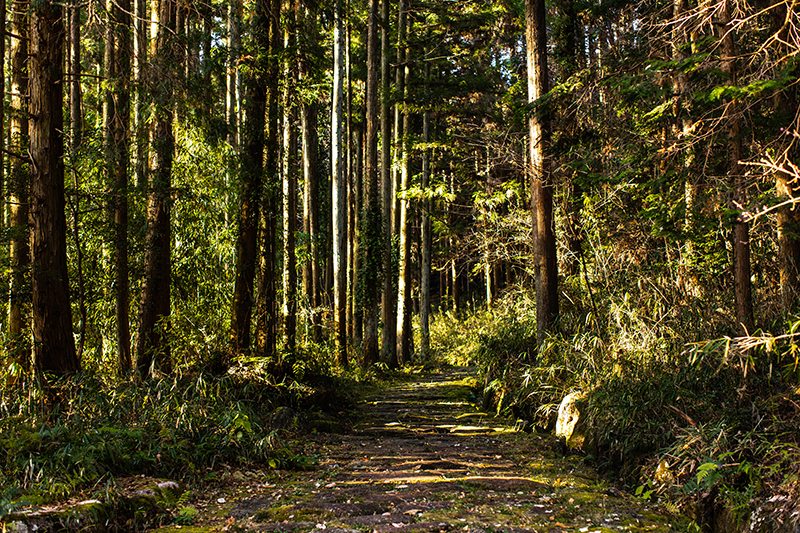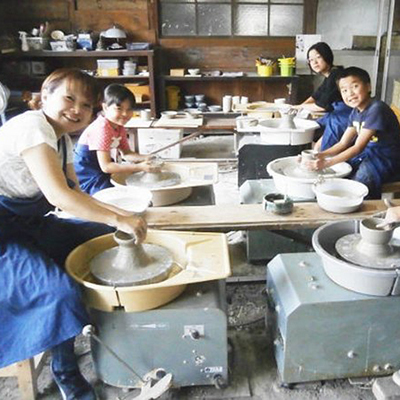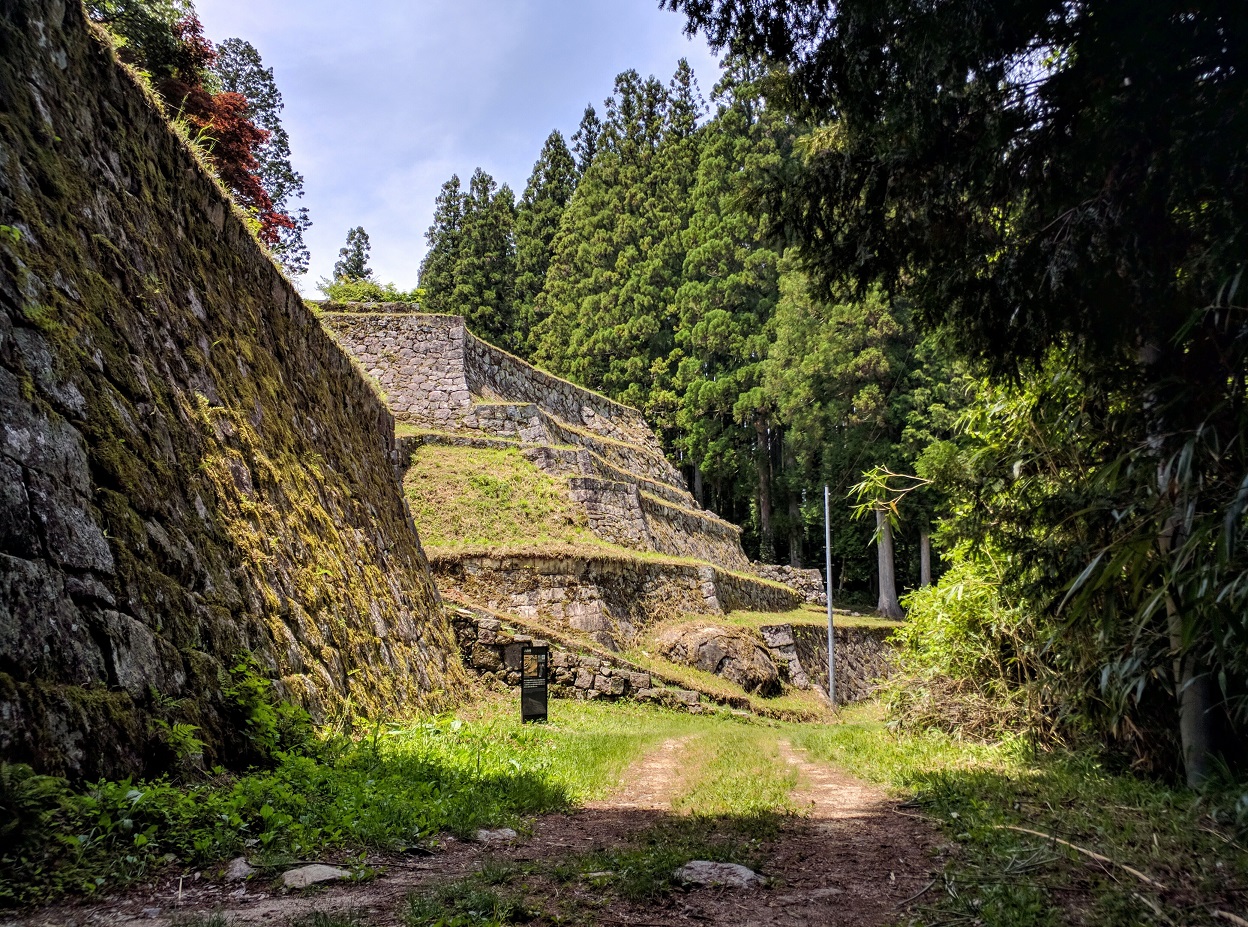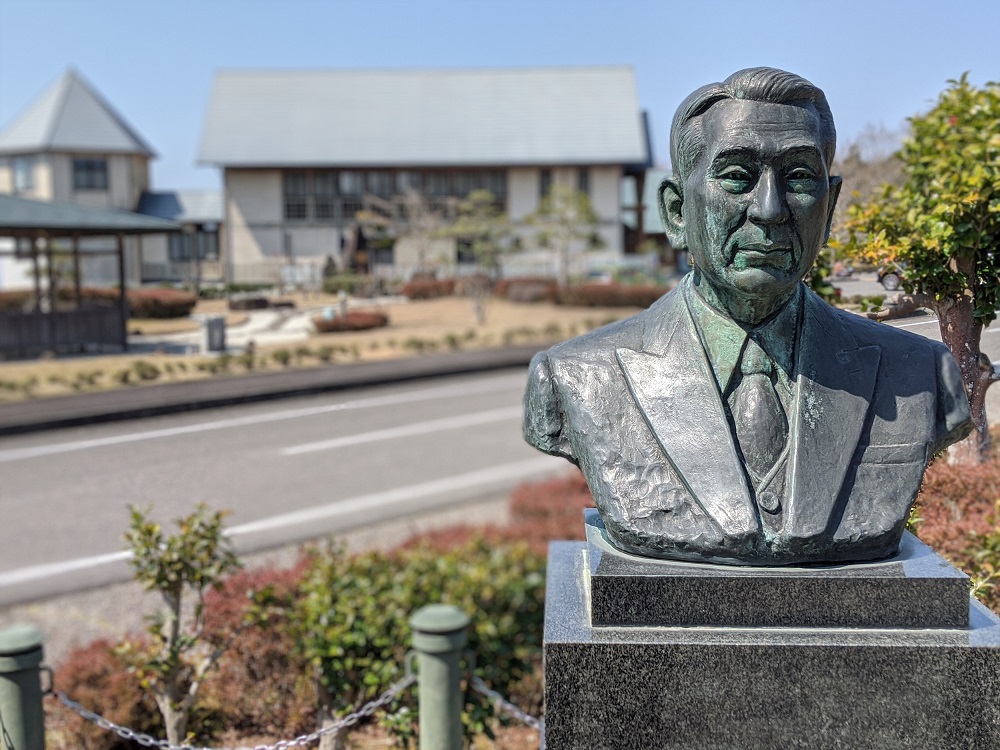Pebbles crunch underfoot as we walk along the Nakasendo trail. The air is crisp and the mountain is green. It’s a blue-sky day with wisps of clouds dissipating in the near distant sky. Along the path, there is the brilliant yellow of a ginkgo tree, the sound of water rushing in the narrow canals to the side of the road, and the warble of a bird somewhere nearby. We follow the path into a primeval forest, cool and dank with moisture and a carpet of sweet, decaying leaves. Moss grows between the weathered stones, softening the path.

The Nakasendo is an old traveler’s road from the Edo period, which lasted from 1603 to 1868. Nakasendo (中山道) means “Central Mountain Road” or “Inner Mountain Path.” Though parts of the road were built far before, during the 7th century, the road was more formally established in the early 1600s, during the Warring States period. During that time, the ruling shogun, Tokugawa Ieyasu, wanted to develop a former highway system; five roads were chosen and administered by the central government. Along with the Tokaido (along the east coast), the Oshukaido and the Nikko-kaido (which ran north from Edo [modern-day Tokyo]), and the Koshu-kaido (which ran west from Edo into the mountains), the Nakasendo trail was an important route linking Edo and Kyoto, the imperial capital until 1869.
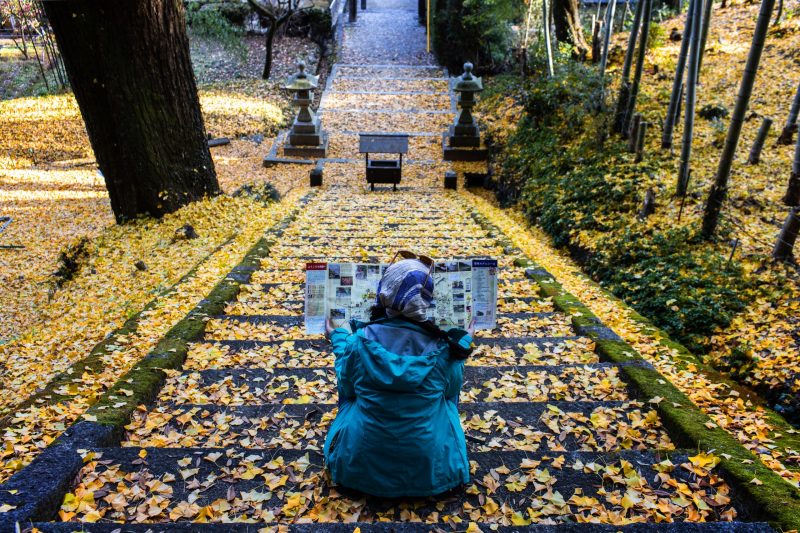
I’ve long wanted to walk an old trail or pilgrimage route like the Nakasendo trail. I counted steps long before iPhones tracked them or Fitbits made it seamless, using manual and then digital pedometers. In the age of planes, trains, and automobiles, walking is a curiosity, especially if it’s not a quick trip to the store or an outing to the mountains, complete with boots and trail mix. “Why would you walk when you can take the train?” you might ask. One reason is that by walking a trail like the Nakasendo trail, you can get a taste for what life might have been like in 18th-century Japan; and on parts of the road, what it might have been like a thousand years ago.

The roads were traveled by samurai, warlords, itinerant monks, peddlers, and even members of the royal family. They were major commerce and trade routes, and the Nakasendo, at approximately 532 kilometers (135 ri), took at least 15 days to travel from end to end. As such, 69 post towns, denoted by the suffix –shuku or –juku, were established along the Nakasendo, starting at Nihonbashi in Edo and Sanjo-ohashi in Kyoto. The towns offered inns, watering holes for horses, shops, teahouses, and places to pray.

The Nakasendo was nicknamed himekaido, or “princess highway.” That’s because it was favored by court ladies and the daughters of high-born families. The Tokaido was flat, but it had a lot of river crossings without bridges, explains YoshiyukiAndo from the Nakatsugawa City Nakasendo History Museum. “People had to wait to be ferried across, which took time and money,” he says. “The Nakasendo trail was a bit longer and indirect, hillier, but with no river crossings so it was safer and easier to schedule.”

Though the road offered access to the outside world, towns were still small and mostly self-sufficient. “In this area, everyone had to work together, growing rice, growing vegetables, working together, making entertainment, in order to live,” saysKazuyoTanahashi, a local guide from Okute-juku. “They were able to live with each other’s help. They all took care of each other’s children. They also raised silkworms, made silk, wove cloth, and made clothing.” Around here, other items the villages produced for trade included rice, sumi (charcoal), and pottery. This region also has the largest number of local kabuki groups, some from the Edo period, when people along this road put on plays for themselves and passing travelers.
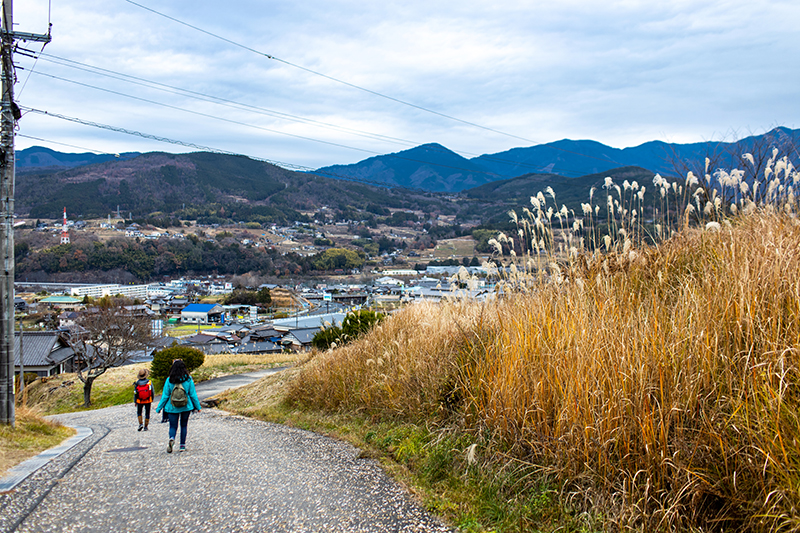
Some of the Nakasendo had stood unchanged for hundreds of years. Some buildings, vistas, and bits of road are just the same as they were, such as in Nakatsugawa, a town known for its craftspeople, which has never suffered a massive fire. Though there are new buildings, old ones remain too, interspersed with the modern. There’s a feeling of dipping in and out of time.

In one spot, a hipster coffee shop with perfectly foamed milk; in another, a wooden water wheel that was used to grind buckwheat into soba flour. Some of the towns are well developed, bustling with commerce. Shopkeepers that look like they’re from the Edo period are selling the old wares: bottles of local sake, wood crafts made from cedar and cypress, dried persimmons, and pickled vegetables. In between towns are stretches of quiet: just you and the forest and the stones, the grass and the wind.

We’re walking today in Gifu Prefecture, and our local guides share more tidbits about the post towns and the path. Mikio Takayama, from Hosokute-juku, indicates grass-covered earthen mounds piled up at the side of the trail. “These are distance markers,” he explains. “Every ri these mounds are piled up as a marker to let you know how far you’ve come.” Called ichirizuka, the mounds denote one ri, a distance measurement of 3.93 kilometers or 2.44 miles. The length of a ri was supposed to be the approximate distance that a person could walk in an hour (keeping in mind that most travelers on this road were burdened with heavy loads, armor, pack animals, or other baggage). “It’s 1.5 ri between Hosokute and Okute, and to Oijuku it’s 3.5 ri,” Takayama explains.
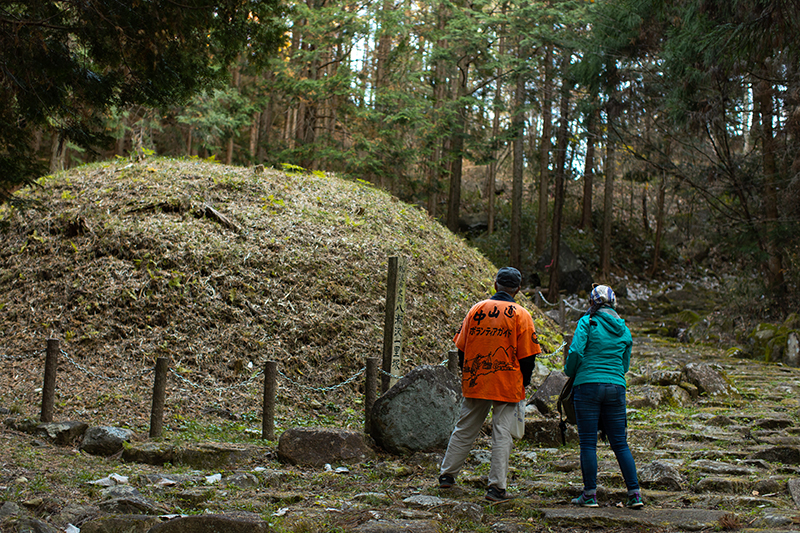
Today, a few towns and markers remain on sections of the road. It’s much easier than it was. You can take a train or a car to your chosen starting point; there are even luggage services that will deliver your pack to the next inn, so you need only carry a light rucksack on the trail. Still, it’s remote, and some of the towns only have a few dozen to a few hundred residents. We’re deep in the Kiso Mountains here, and modern services are few and far between.

Cyclists can also ride the trail. There are 17 post towns in Gifu, and though many sightseeing spots are concentrated in Magome, riding a bicycle allows the traveler to see a wider variety of locations while still getting the benefits of the fresh air and trail charm. Autumn, with its brilliant colors, is an especially good time to go by bike.
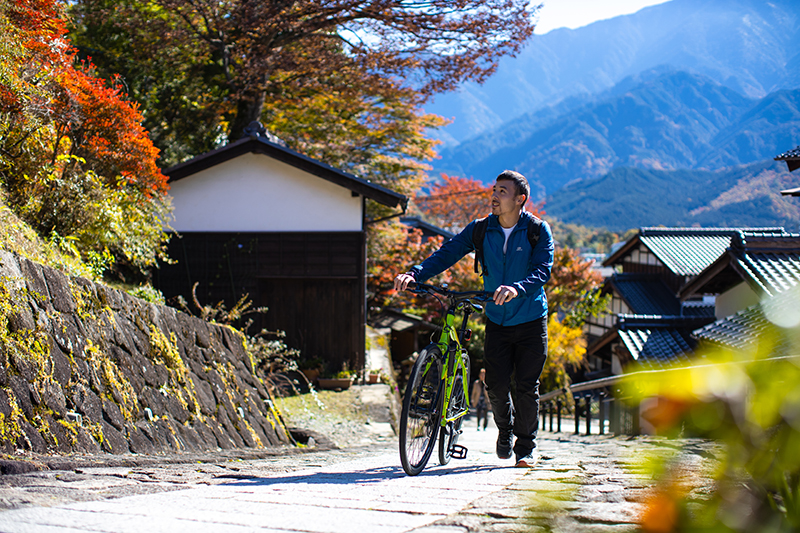
Another benefit of walking a trail like Nakasendo trail is that of truly using my body. Of course, I walk around the city and (sometimes) exercise, but to be honest, many of my hours are spent at a desk, staring at a screen, slouching. On the trail, I’m developing a deep appreciation for the simple things that the body can do. We get into a rhythm and there’s no rush. It feels good to go exactly as fast as we want to go. And a lunch of soba and tempura, when we stop for a break, has never felt so well deserved as after walking a couple of hours to earn it.
Another reason to walk the path is to get to know a different side of Japan, distinct from the hustle and bustle of the urban centers. “There’s lots of old scenery remaining, lots of views from high places and valleys,” says Ando. “The Tokaido is on the plains, so the scenery doesn’t change as much, but on the Nakasendo trail, the scenery changes dramatically minute by minute.” Walking this road, you get a feel for the landscape of Japan, which is over 70% mountainous, and is the reality for so many people living in the countryside.
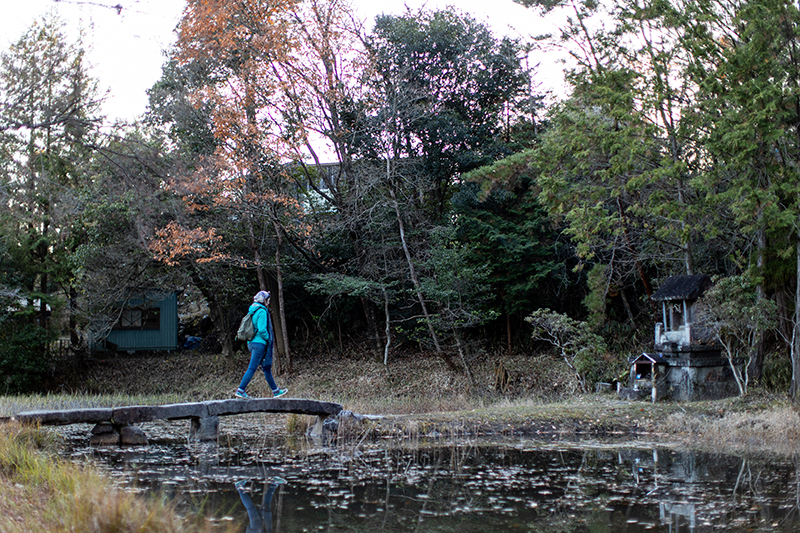
The vistas here were so compelling that they were rendered as a set of woodblock prints by the famed ukiyoe artist Utagawa Hiroshige. During one section of the trail, Takayama has me turn around and look at the view, then shows me a print of Hiroshige’s. It looks mostly the same, some 200 years later, and even though we have more modern conveniences now, it’s easy to imagine the treachery of the mountain in winter, or the hope that the next trading post would have something delicious to energize the traveler for the next leg of the trip.
As we walk the path, the trappings of town fade and recede, and eventually, the scenery becomes more and more natural. The townsfolk houses become farm houses, and the landscape expands, rolling into farms and streams and terraced crops. We pass a young girl helping her dad change a tire. “People seem really handy around here,” I say, noting that even adults don’t seem to know how to change a tire in Tokyo. “They have to be handy to live,” says Mieko Katsu, a local guide from Nakatsugawa. “They can’t call someone in to do things here, so they have to do it themselves.”
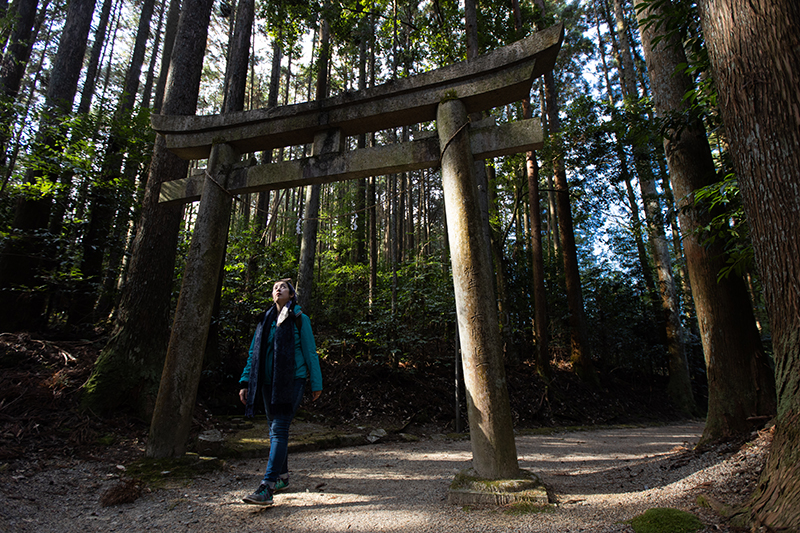
That loneliness is something I can relate to now, with not much here except the road, my feet, and my pack. It’s a way to get to know this place at a granular level. I can literally stop and smell the flowers, observe insects, feel minute changes in temperature, and be a part of the weather. While a rainshower is not always welcome, there’s something intimate about feeling at one with the elements and the earth.
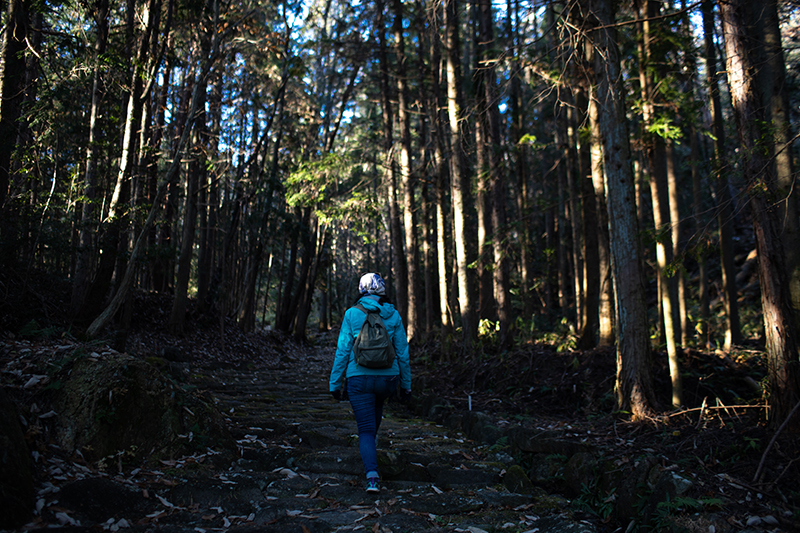
Walking is a kind of meditation, and at a walking pace, my surroundings seem magnified. Each moment becomes distinct. What is this tree? I wonder. It smells beautiful. Ooh, the way the light is coming down just so, right here, is special. Was that a fox darting behind that bush? It was something with a fluffy tail. Katsu says there are boars, bears, deer, and monkeys here too. We plunge into a deep green cleft between mountains, with waterfalls rushing and leaves rustling in the breeze.
It’s in this mood that I arrive at Manpukuan, the temple lodging at Eisho-ji in Magome-juku where we’re staying for the night. Magome is a sloping town with handsome buildings lining both sides of the trail. Established more than 350 years ago, the temple here is part of the Rinzai Zen sect. The temple’s principles include enhancing and respecting human dignity and valuing life with Buddha’s support.
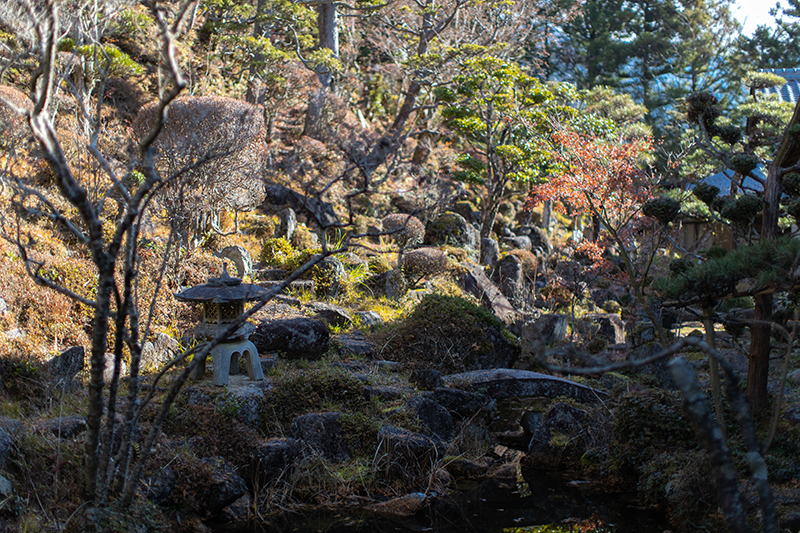
Head monk Sasaki leads us into a tatami-matted room. He’s barefoot, head shorn, in dun robes. He sits cross legged on a floor cushion, beckoning us to do the same. We are doing zazen, sitting meditation. We practice being still and trying to quiet our minds. Sitting still is something that comes with training; it’s natural, in our buzzing everyday lives, to fidget, to multitask, and to run to the next appointment. It’s not easy, but it’s easier than if we had come directly from the city. After a day of walking and finding community with trees and sunlight, wind and bugs, it feels achievable.
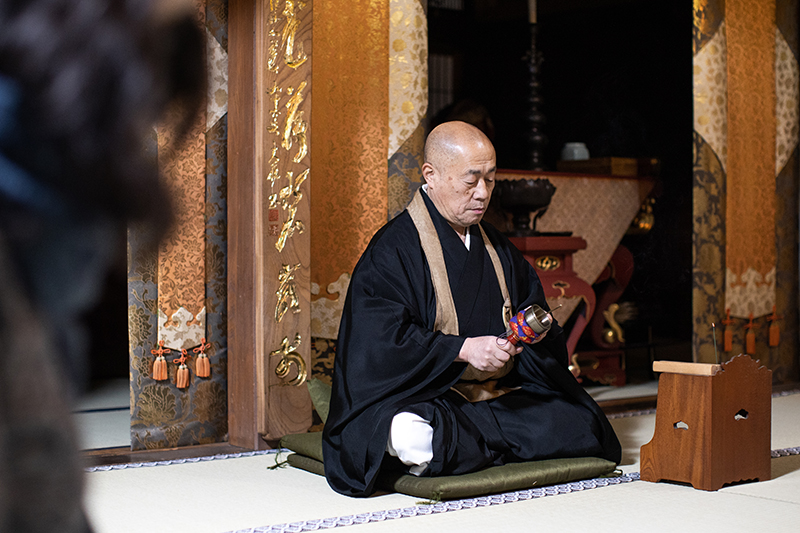
Sasaki asks us to consider a koan: When you clap, is it the left hand, or the right, that makes the sound of clapping? He lights a stick of incense, and the delicate aroma wafts over us as we sit in the cold room, looking for peace. Thoughts clamor for attention, ones that were drowned out in the city and finally, here, in this peaceful place, have surfaced and are begging to be heard. My brain seems louder in all this quiet.

The stick of incense burns out, and Sasaki bids us to rise. Outside, it’s silent. We retreat to the dining room, where we have a generous shojin ryori dinner: Buddhist vegetarian cuisine served at temples to pilgrims. We eat morsels of sesame tofu, steamed radish, pickled vegetables, and rice. It’s spare but filling and nourishing. We go to our futons for the night, resting before another day of walking.
Whether walking or cycling, getting to meet and talk with the people of the Nakasendo is a precious experience. And while popular post towns like Magome have their charm, some of the best moments are found in the quieter, surrounding areas, where the true spirit of the trail shines through.
